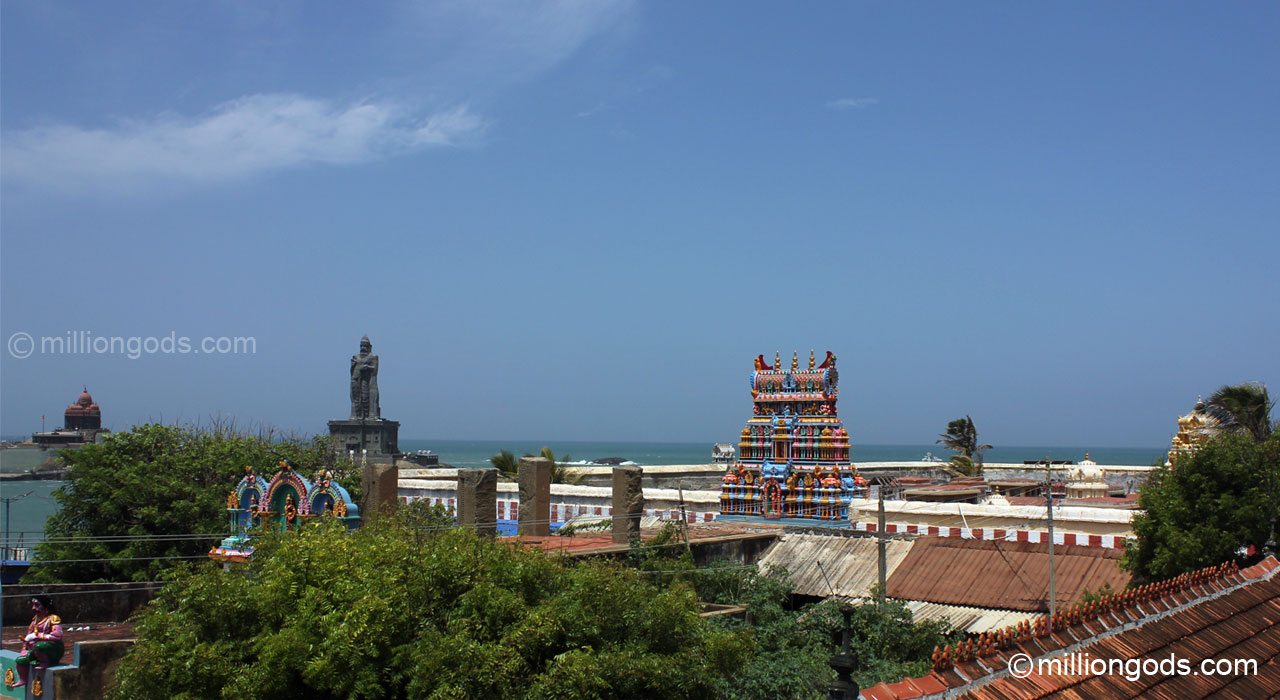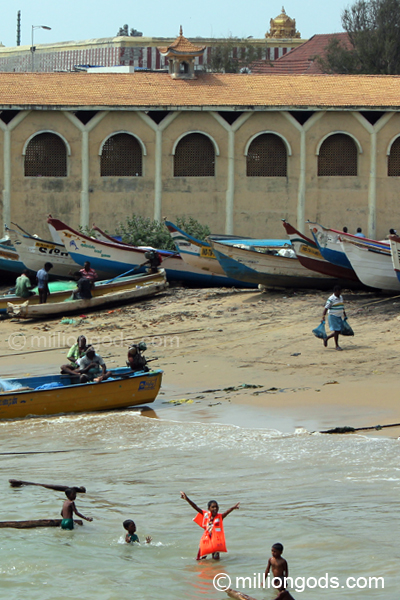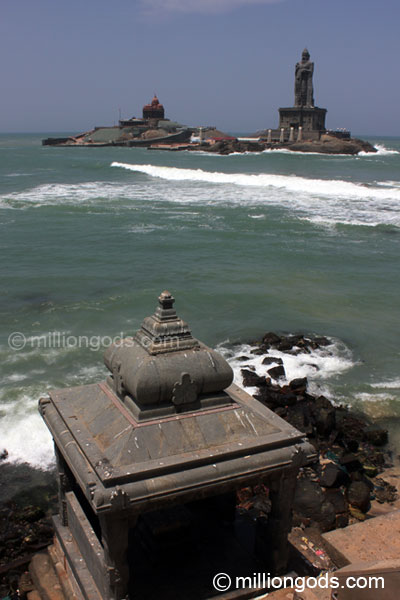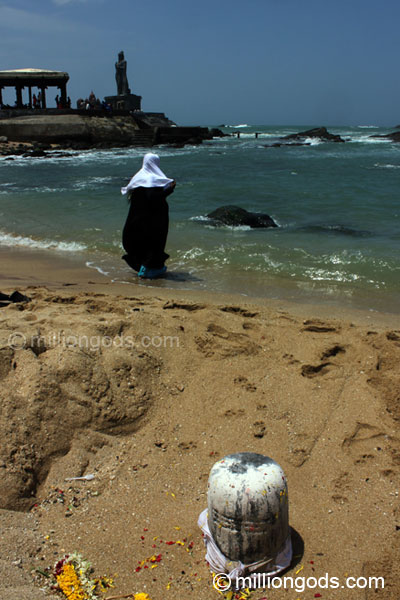Kanyakumari Amman, facing east
Amman, Kanyakumari

God
Goddess
Kanyakumari Amman, facing east
Other Deities
Indra Kantha Ganapathi, Surya, Naagar, Darmasastha
Amman Kanyakumari is an ancient east-facing temple which is entered through a gateway followed by a three-tiered Rajagopuram at the south. There are 3 Prakarams in this temple including the one running around providing beautiful views of the Sangam of the three seas, Vivekananda rock, and other memorials. The inner prakaram has Mantapams, Annadhaana hall, and the queue passages. The east-facing Sanctum Sanctorum of the goddess is in the innermost Prakaram. The goddess is a beautiful idol about 5 feet tall. Going around the circumambulatory passage is a revealing experience as you can see some excellent carvings of Navagrahas, Mahavishnu, and Muruga apart from a large number of stone inscriptions. The temple tank is located outside, to the north of the temple. On the southern side at the land’s end is a 16 Pillar Mantapa which is meant to mark the place for people to have a holy dip at the Sangam of the three seas (Bay of Bengal, Indian Ocean, Arabian Sea).
Holy Water (Theertham) – Paba Vinasam (Mandooga Theertham) – temple tank. Nine Theerthams in the sea including Savitri, Gayatri, Saraswathi, Kanya, and Vinayaka in the Bay of Bengal side. Mathru, Pithru, and Bheema in the Indian Oceanside. Sthanu Theertham in the Arabian Seaside.
Sacred Tree (Sthala Vriksham) – No information



History
Amman Kanyakumari is an ancient temple that has found literary mention in Sangam Literature, Ramayana, Mahabaratha, Yajur Veda, and others. The author of Periplus of the Erythraean Sea (60-80 CE) has mentioned the deity of Kanyakumari thus, “There is another place called Comori and a harbor, hither come those men who wish to consecrate themselves for the rest of their lives, and bath and dwell in celibacy and women also do the same; for it is told that a goddess once dwelt here and bathed.” Ptolemy (100 – 170 CE) also has mentioned the existence of this place as Comori. The worship of this Goddess has been in existence in prehistoric times and later the Pandyas built it as a small temple. Later the Nayak Kings carried out more developments. Several stone inscriptions are found around the corridor walls of the inner Prakaram.
Legend
Goddess Parvati came to Kanyakumari in the form of a virgin girl and began to do penance. Arrangements were made for her wedding with Sthanumalayan of Suchindram and an auspicious hour was fixed at midnight on a particular date for the marriage. Sage Narada wanted to stop the marriage because the purpose of her present form was to achieve the death of Banasura, an asura who was tormenting the worlds. According to a boon Banasura had received this could be achieved only by a Virgin. Sthanumalayan started for Kanyakumari and when he reached a place called Vazhukkumparai, about 5 kilometers from Suchindrum, Narada assumed the form of a cock and crowed loudly, thus falsely indicating the break of dawn. Thinking that the auspicious hour had passed, Lord Sthanumalaya returned to Suchindrum, and the upset Goddess decided to remain a virgin forever.
Amman Kanyakumari temple is believed to have been created by Parasurama, one of Lord Vishnu’s Avatars.
Directions
Amman Kanyakumari is near the seashore and easily accessible.
Stay and Food
Kanyakumari has a lot of restaurants and hotels. It is crowded most of the time and it is advisable to book your stay in advance.
